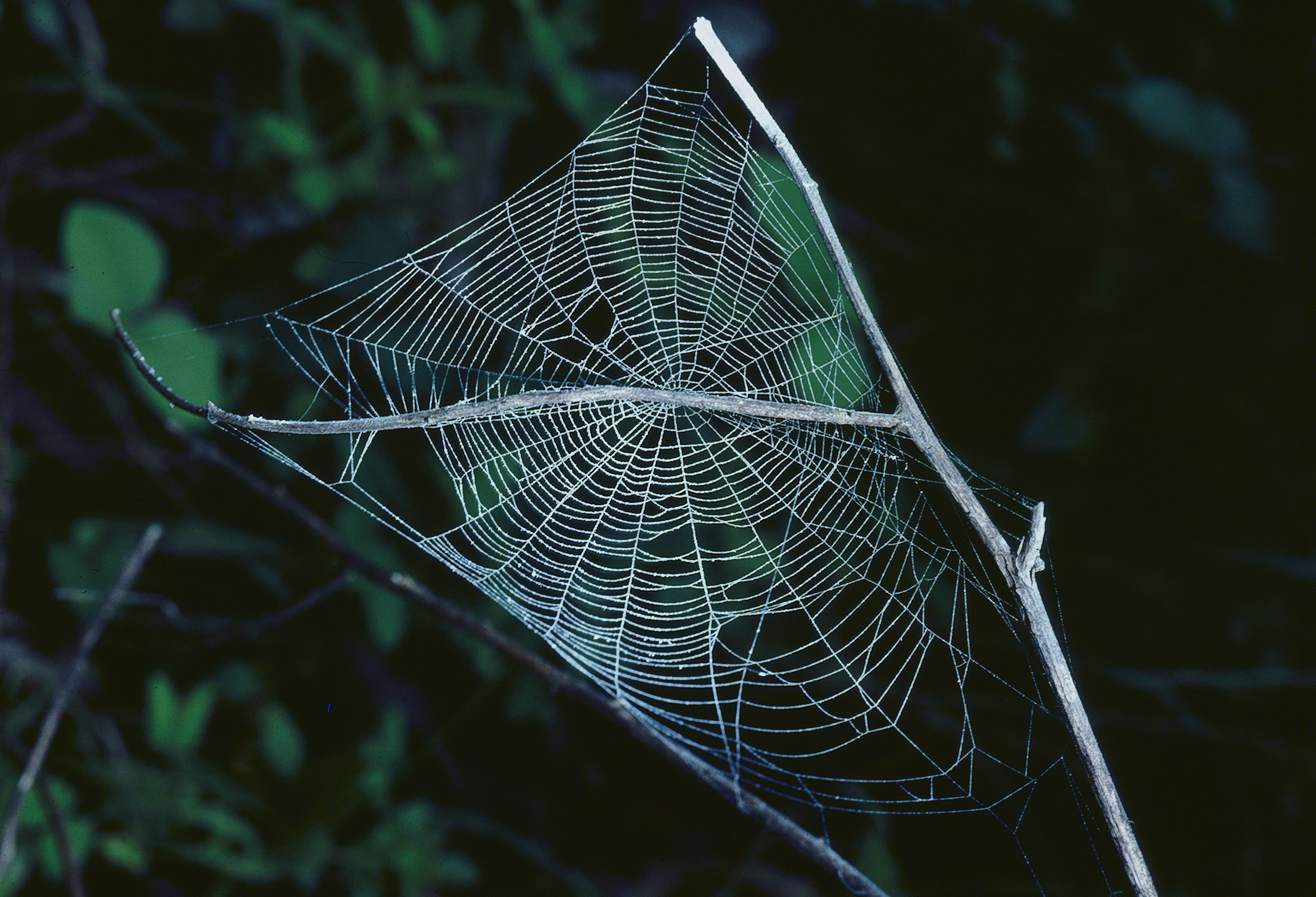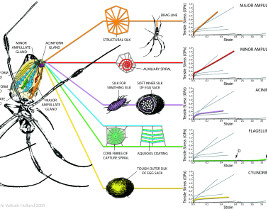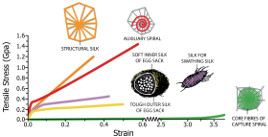

Research


Natural Materials
The Natural materials group is research interests lie specifcally in how organisms use materials outside of their bodies. Specifcally we call these maerials ectosecretions. Our core hypothesis is that Nature has found some very smart ways of manipulating the water surrounding the molecules in these materials in order to maintain a specific set of properties over the timescale required for use.
One such example, and an interest of the group for 2 decades is silk:
Silks are structural proteins that have evolved independently many times in spiders, silkworms and even shrimps.
Silks, by definition, are spun. In many ways silk spinning has more in common with industrial polymer processing; however there is one key difference, environmental impact.
Silk is a high performance, biodegradable biopolymer spun at room temperature, with the only waste product being water.
Silk’s desirable properties originate from the self-assembly of a multiscale hierarchical structure produced during spinning, but little is known regarding the conditions and mechanisms by which this is achieved.
We are interested in understanding how silk is spun which we hope will unlock many of the secrets of this ancient material and provide insights from protein folding to novel material design.
Our lab brings together a wide range of analytical techniques that enable us to probe a natural material’s response to a variety of controlled stress fields, including chemical, thermal and mechanical.
Investigating how natural materials respond provides us with insight into how evolution has optimised certain material properties in order to solve biologically relevant challenges (i.e. low energy spinning, high toughness fibres) which we can use as inspiration for our own.
Internal Use Links